
How to Use Sound Sensor: Examples, Pinouts, and Specs
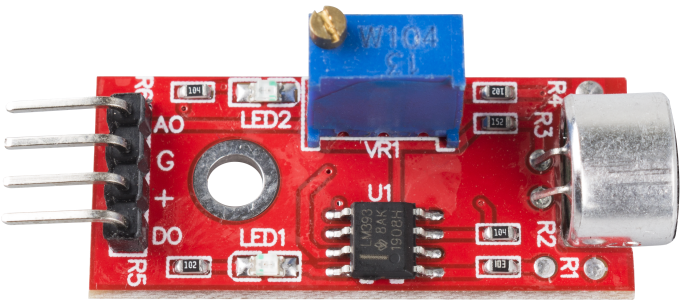
 Design with Sound Sensor in Cirkit Designer
Design with Sound Sensor in Cirkit DesignerIntroduction
A sound sensor is an electronic device that detects sound levels in the environment and converts them into electrical signals. These sensors are commonly used in various applications such as noise level monitoring, security systems, and interactive projects that respond to voice commands or other sounds. They are particularly popular in hobbyist projects with microcontrollers like the Arduino UNO.
Explore Projects Built with Sound Sensor
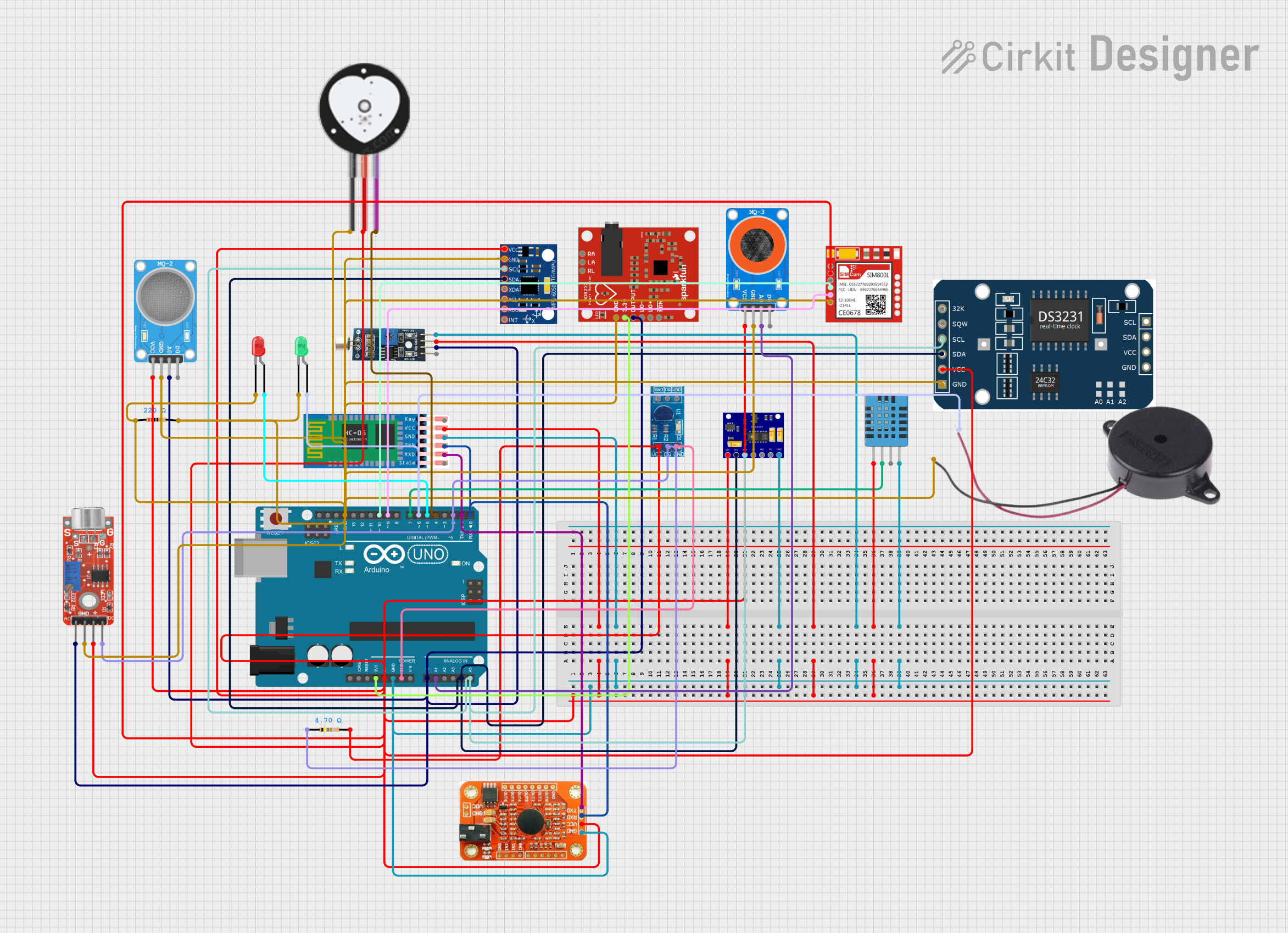
 Open Project in Cirkit Designer
Open Project in Cirkit Designer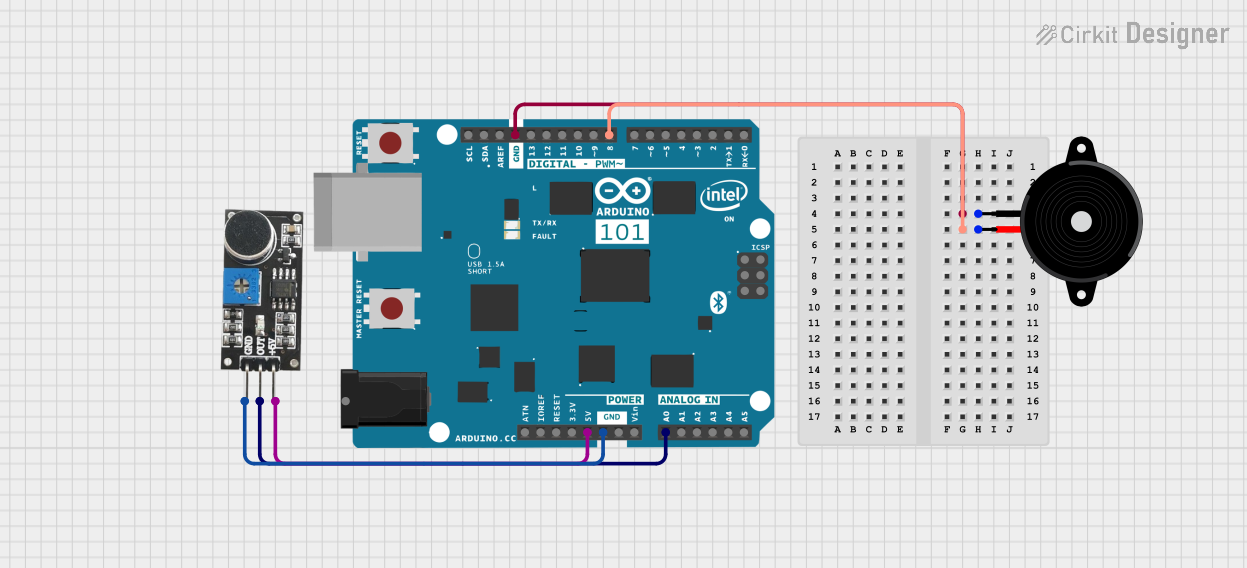
 Open Project in Cirkit Designer
Open Project in Cirkit Designer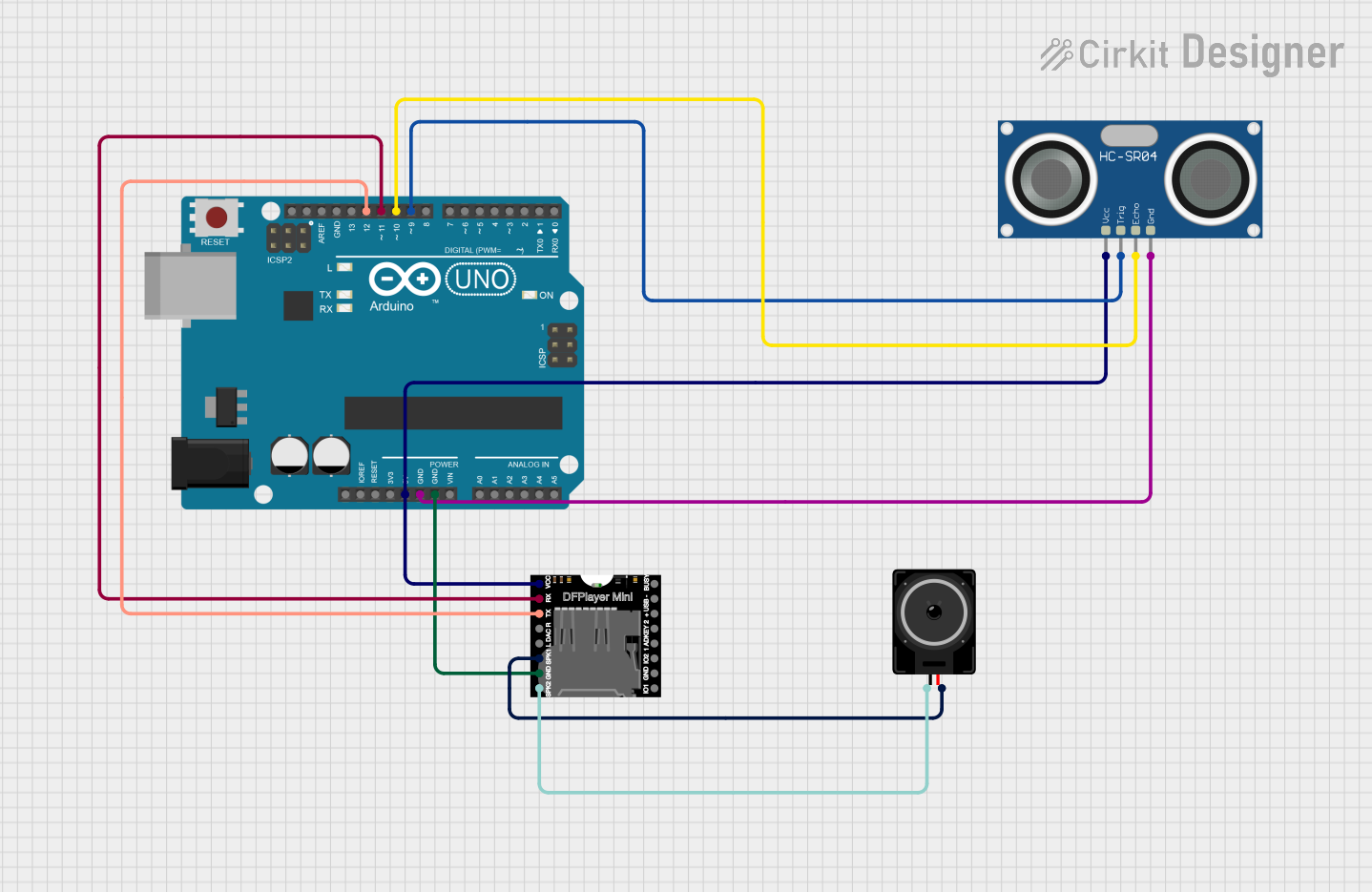
 Open Project in Cirkit Designer
Open Project in Cirkit Designer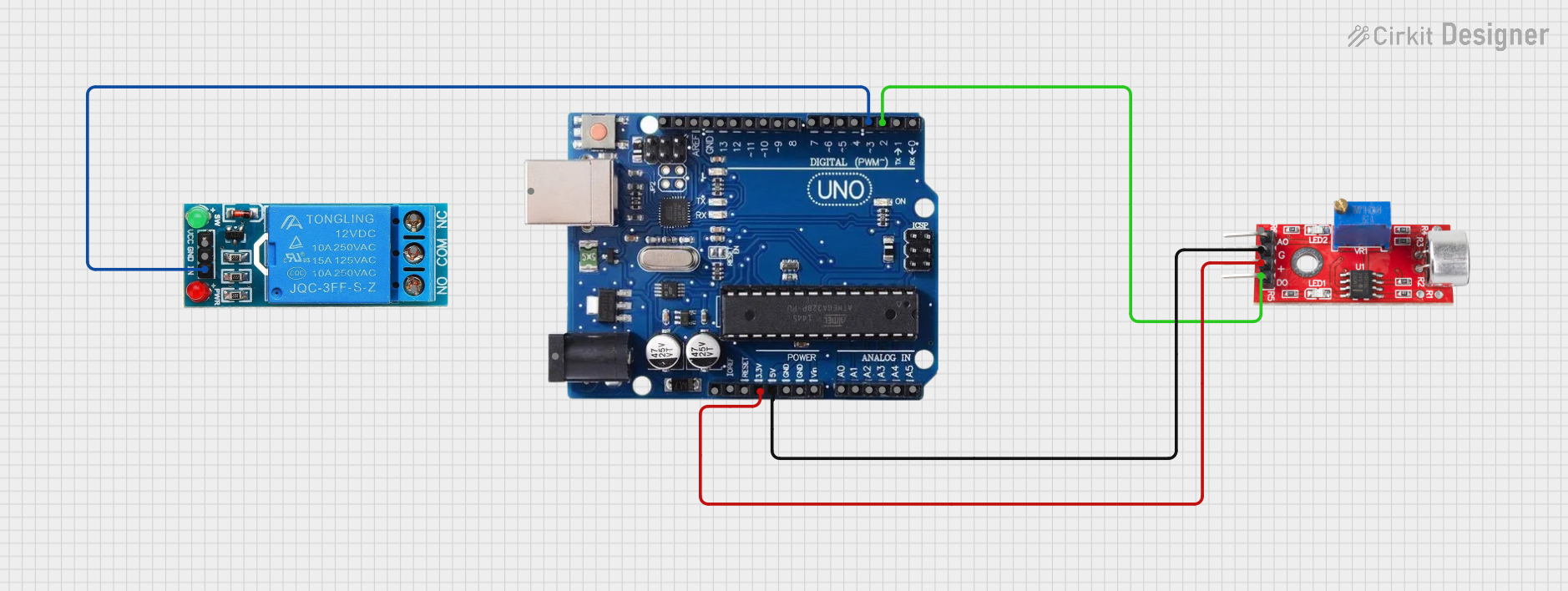
 Open Project in Cirkit Designer
Open Project in Cirkit DesignerExplore Projects Built with Sound Sensor

 Open Project in Cirkit Designer
Open Project in Cirkit Designer
 Open Project in Cirkit Designer
Open Project in Cirkit Designer
 Open Project in Cirkit Designer
Open Project in Cirkit Designer
 Open Project in Cirkit Designer
Open Project in Cirkit DesignerTechnical Specifications
Key Technical Details
- Operating Voltage: Typically 3.3V to 5V
- Current Consumption: Varies with model, often in the microampere (µA) range
- Frequency Range: Generally sensitive to audio frequencies (20Hz to 20kHz)
- Output: Analog voltage signal relative to sound intensity
Pin Configuration and Descriptions
| Pin Name | Description |
|---|---|
| VCC | Power supply (3.3V to 5V) |
| GND | Ground |
| A0 | Analog output (proportional to sound level) |
| D0 | Digital output (sound detection threshold) |
Usage Instructions
Connecting to a Circuit
- Connect the VCC pin to the 5V output on the Arduino UNO.
- Connect the GND pin to one of the GND pins on the Arduino UNO.
- Connect the A0 pin to any of the analog input pins (A0-A5) on the Arduino UNO.
- (Optional) Connect the D0 pin to a digital input pin if you wish to use the threshold feature.
Important Considerations and Best Practices
- Ensure that the operating voltage of the sound sensor matches that of the microcontroller to prevent damage.
- Place the sensor away from noise sources like motors or high-frequency electronics to avoid interference.
- Use proper decoupling capacitors close to the sensor's power supply pins to minimize power supply noise.
Example Arduino Code
// Define the sound sensor pin
const int soundSensorPin = A0;
void setup() {
// Initialize serial communication at 9600 baud rate
Serial.begin(9600);
}
void loop() {
// Read the analog value from the sound sensor
int sensorValue = analogRead(soundSensorPin);
// Convert the reading to a voltage level
float voltage = sensorValue * (5.0 / 1023.0);
// Print the voltage level to the Serial Monitor
Serial.print("Voltage: ");
Serial.println(voltage);
// Wait for a short period before reading again
delay(200);
}
Troubleshooting and FAQs
Common Issues
- No Output: Ensure that the sensor is properly powered and that the pins are correctly connected.
- Erratic Readings: Check for loose connections or interference from nearby electronic devices.
- Low Sensitivity: Adjust the sensitivity potentiometer on the sensor, if available.
Solutions and Tips for Troubleshooting
- If the sensor is not responding, verify that the power supply is within the specified voltage range.
- For digital output mode, you may need to calibrate the threshold level using the onboard potentiometer.
- Use shielded cables for connections to reduce noise and interference.
FAQs
Q: Can the sound sensor differentiate between different sounds or frequencies? A: Standard sound sensors output a voltage proportional to the sound intensity and do not differentiate between frequencies. For frequency analysis, additional processing, such as a Fast Fourier Transform (FFT), is required.
Q: Is it possible to use multiple sound sensors with an Arduino UNO? A: Yes, multiple sound sensors can be connected to different analog pins on the Arduino UNO. Ensure that each sensor has its own dedicated analog pin.
Q: How can I improve the accuracy of the sound sensor? A: To improve accuracy, calibrate the sensor in the environment where it will be used, and consider using averaging or filtering techniques to smooth out the readings.